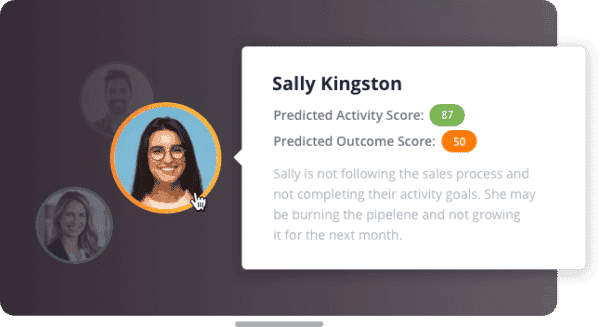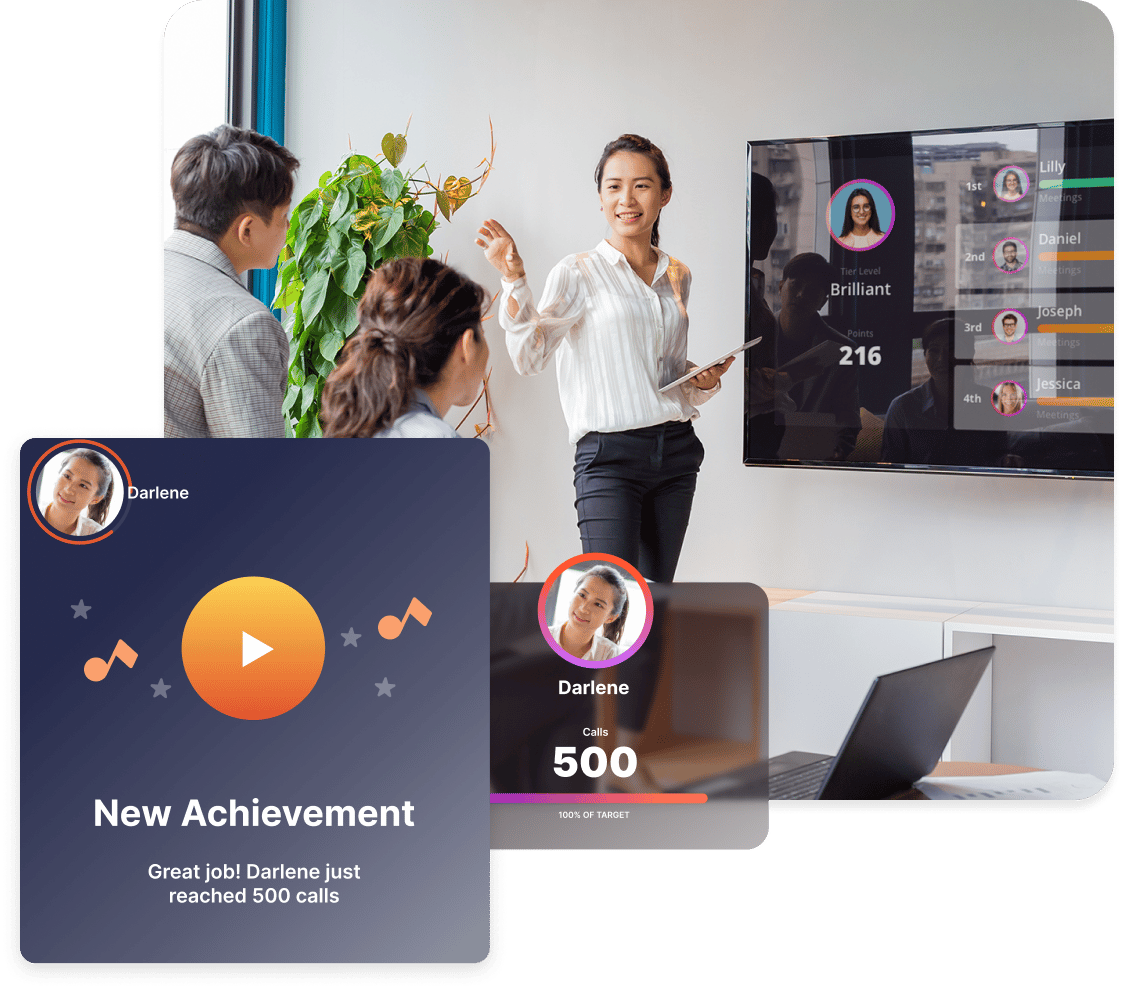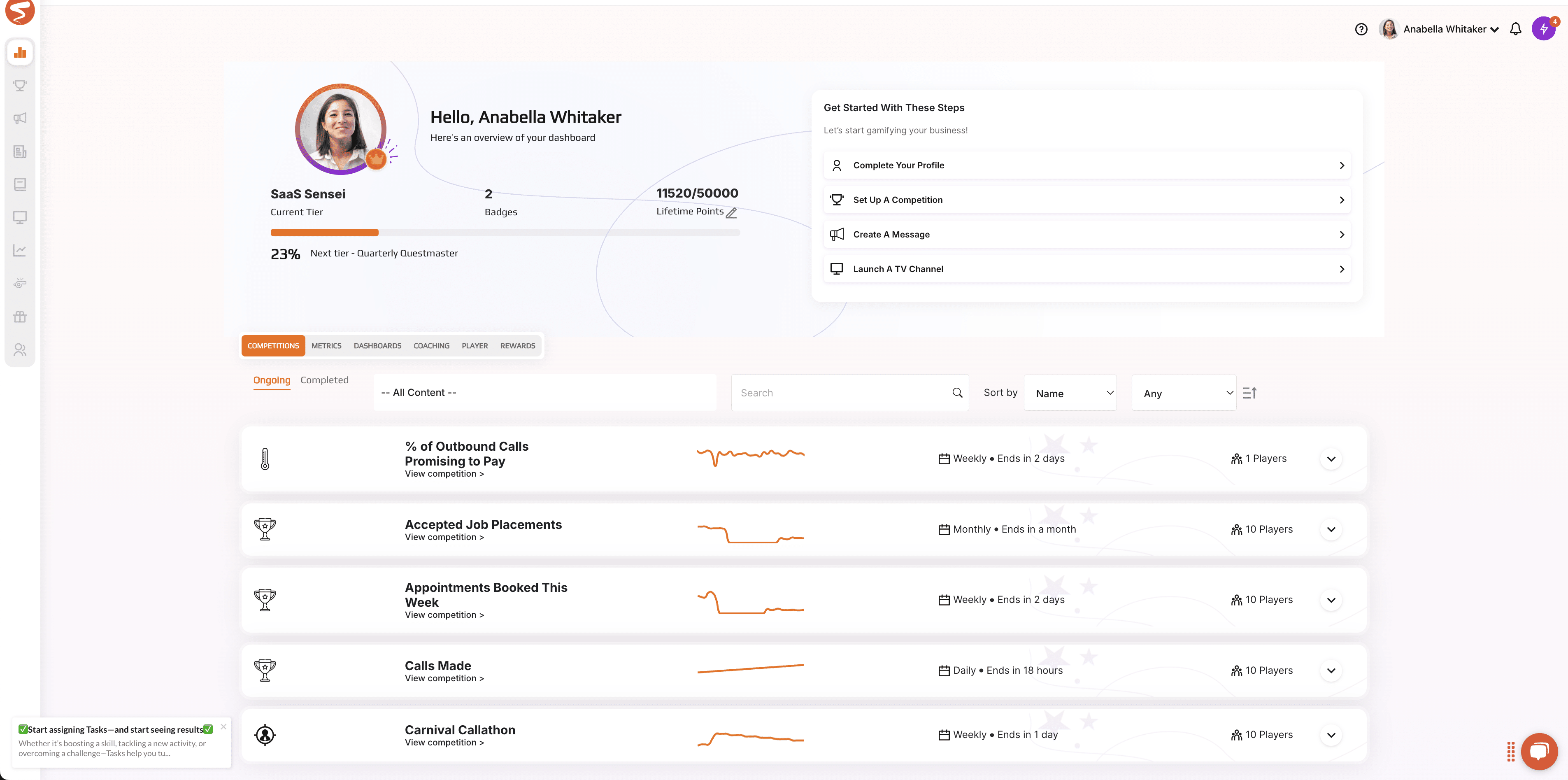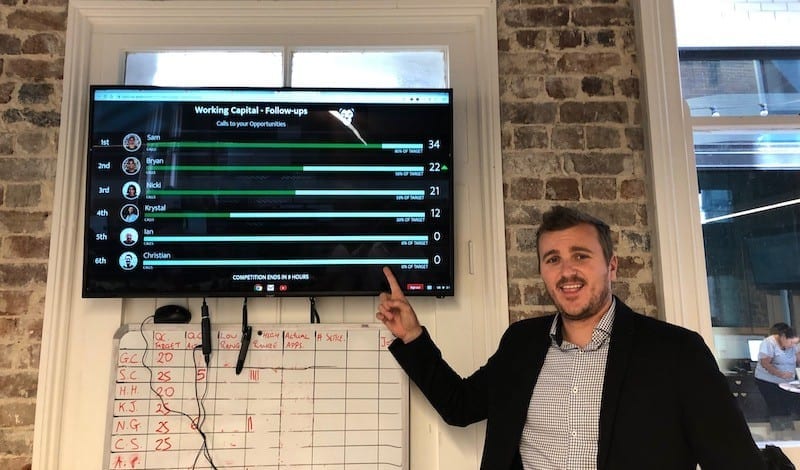Gamification is a phenomenal way to motivate your sales reps! And while the benefits of gamification are numerous – from increased job engagement to higher productivity and more revenue – it takes strategy to implement, control, and maximize the effect of gamification on your sales process. In this article, we’re going to show you how to create and implement a gamification strategy to motivate your reps and increase your sales.
Let’s press play!
Gamification for Sales Teams 101
Gamification is a process of using game-like elements to motivate your employees or customers.
Here at Spinify, we focus on maximizing your results by giving you a gamified sales dashboard, but gamification works just as well for converting leads.
The main benefit of using gamification on your sales team is motivation.
Since gamification motivates both your competitive reps, and the reps who want to increase their skills (essentially competing against their own selves), it’s a great solution for diverse teams.
Secondly, integrated solutions like Spinify’s gamified sales dashboard allow you to hold your sales team accountable.
Instead of worrying about certain reps being jealous of others, or slacking off because they feel like their efforts aren’t contributing to the target, you can motivate everyone by showing them how every little task counts.
And you can bet that will motivate everyone to perform even the most boring tasks!
So here’s how to create a great gamification strategy:
How to Create a Gamification Strategy for Sales Teams
Much like other strategies, having a gamification strategy will help you maximize your efforts while controlling reps’ performance.
Step 1. Outline Your Goals
First, it’s important to know what you want to achieve with gamification.
Often, we deal with teams who come to us looking for a way to increase sales rep follow-ups, or simply boost team morale. Even if you aren’t facing any problems, gamification can help you establish rock-solid foundations for success.
We recommend using the SMART goal-setting method to create your sales (gamification) goals:
- S – Specific
- M – Measurable
- A – Achievable
- R – Relevant
- T – Time-bound
For example, you may formulate your goal as: “We want to increase our lead pipeline by attracting 200 new leads within two months.”
Of course, you can establish multiple goals. However, make sure each is specific, time-bound, and relevant to your general sales strategy.
Step 2. Outline Important Actions
We strongly advise against taking a tone-deaf approach that only measures sales, instead of focusing on behaviors that drive sales.
Since gamification in sales teams is largely about motivating your reps, you have to implement a micro approach to get macro results.
For example, if your goal is increasing lead generation, then you should outline practices that contribute to generating leads:
- Audience research
- Outreach
- Cold calls
And so on.
Track important metrics like deals closed, or focus on tracking calls and responses
One of the most important ways gamification can help you is by bringing light to the tasks that sales reps perform continuously to drive great results.
By rewarding your reps for every such task, you can motivate them to perform better, and consequently, exceed their quota.
- Giving them points for performing desired actions (e.g. 5 points for reaching out to a lead, 3 points for sending an email, 4 points for conducting research, etc.)
- Letting your reps exchange points for rewards in the Reward Store
- Celebrating big achievements that contribute to the main goals (e.g. Getting 50 out of 150 leads)
You can even amp up the competition by setting up and customizing sales leaderboards that can be displayed on office TVs and in the app.
Step 3. Establish KPIs
If you don’t have KPIs or metrics, you won’t know how successful your strategy is. This is why we always recommend following the “M” in SMART – measurable.
When you’ve outlined your goals, establish your KPIs for each goal.
For example, if you want to increase your lead generation, you should monitor:
- Outreach rate
- Lead qualification rate
- Number of leads
You could also monitor KPIs specific to each channel. For example, click-through and bounce rates if you’re offering website lead magnets.
Step 4. Proactively Motivate Your Sales Reps
Finally, you should always work with your sales reps on increasing their performance.
Performance looks different for every rep, so it’s important to understand every individual’s abilities and skills.
You can use Spinify for this, too!
Spinify offers Score Cards and Performance Grids which allow you to:
- Monitor every rep’s performance
- Get unique insights
- Coach them towards exceeding their personal goals
It’s not always about competing with others. A good rep wants to be better than they were the previous day.
How Spinify Can Help You Create a Sales Gamification Strategy
As a completely gamified dashboard, Spinify is an excellent tool for sales managers to:
- Establish new gamification practices
- Motivate and retain their reps
- Increase their sales
In short, it’s a recipe for sales success. And it’s fun!








